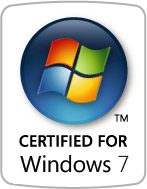Windows 7 has been out less than a few days, and we already have people who
don't like it. Not surprising, actually, since this is clearly a matter of
taste and personal preference, particularly for those who are coming from
Windows XP.
I'm a little concerned about this "free" version you mention, since there really isn't one. I'll assume you're talking about the release candidate, a test version that will expire next year sometime.
But you're quite correct: there is no uninstall. Instead, you'll need to replace.
I'm a little concerned about this "free" version you mention, since there really isn't one. I'll assume you're talking about the release candidate, a test version that will expire next year sometime.
But you're quite correct: there is no uninstall. Instead, you'll need to replace.
When you install an operating system you're effectively overwriting what was
there before.
In the case of a "clean" install, you're erasing everything on the target partition, and then copying in the new operating system. In case case of an "upgrade" install, you're preserving your applications, data and settings, but the operating system itself is completely overwritten and replaced.
Now you've indicated that you installed to a separate partition. You likely have a choice at boot time which partition to boot into, so simply boot into the XP partition, remove the Windows 7 boot option, and start using that partition you had used for Windows 7 however you see fit.
If you're not given a boot choice, but you're certain that you installed on a separate partition, you may need to use a partition or boot management tool to change the partition that your machine boots from. I just use the partition manager in an Ubuntu Live CD, but you may also be able to mark the old Windows XP partition as active using the Windows 7 disk management tool.
If you installed on top of your Windows XP installation, then there's no recourse, and as I said, nothing to uninstall to. Your only real option is to reinstall Windows XP from it's original media.
And for the record, while I've used Windows XP and Windows 7 throughout this discussion, it applies to any combination of operating system. Regardless of which you use, there's really no such thing as an uninstall. Because an operating system is so fundamental to operating a computer, most simply do not retain the information required to support a subsequent uninstall and reversion to whatever had been there before.
By far your best approach, always, is to perform a full system backup - an image backup of some sort - prior to installing a new operating system. That way, regardless of what happens you'll have everything you need to restore the system to its state at the time of that backup should you decide you don't like the new operating system.
In the case of a "clean" install, you're erasing everything on the target partition, and then copying in the new operating system. In case case of an "upgrade" install, you're preserving your applications, data and settings, but the operating system itself is completely overwritten and replaced.
"When you install an operating system you're effecting
overwriting what was there before."
The bottom line is that there's nothing to uninstall to. An
"uninstall", if even available, would leave you with a machine with no
operating system; a machine that would not boot.Now you've indicated that you installed to a separate partition. You likely have a choice at boot time which partition to boot into, so simply boot into the XP partition, remove the Windows 7 boot option, and start using that partition you had used for Windows 7 however you see fit.
If you're not given a boot choice, but you're certain that you installed on a separate partition, you may need to use a partition or boot management tool to change the partition that your machine boots from. I just use the partition manager in an Ubuntu Live CD, but you may also be able to mark the old Windows XP partition as active using the Windows 7 disk management tool.
If you installed on top of your Windows XP installation, then there's no recourse, and as I said, nothing to uninstall to. Your only real option is to reinstall Windows XP from it's original media.
And for the record, while I've used Windows XP and Windows 7 throughout this discussion, it applies to any combination of operating system. Regardless of which you use, there's really no such thing as an uninstall. Because an operating system is so fundamental to operating a computer, most simply do not retain the information required to support a subsequent uninstall and reversion to whatever had been there before.
By far your best approach, always, is to perform a full system backup - an image backup of some sort - prior to installing a new operating system. That way, regardless of what happens you'll have everything you need to restore the system to its state at the time of that backup should you decide you don't like the new operating system.







0 comments
Post a Comment